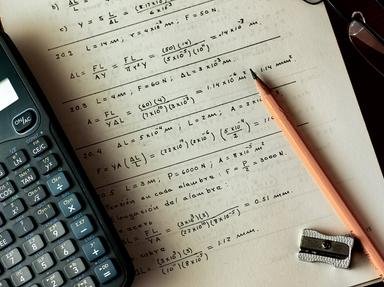
High School Calculus Trivia Quiz
High School Calculus. Calculators are permitted provided that it is not programmable and without graphic display. But I can't do anything if you use it, can I? lol. Feel free to contact me to comment on the quiz.
A multiple-choice quiz
by ff7rule.
Estimated time: 5 mins.
- Home
- »
- Quizzes
- »
- Science Trivia
- »
- Math
- »
- Math Problems